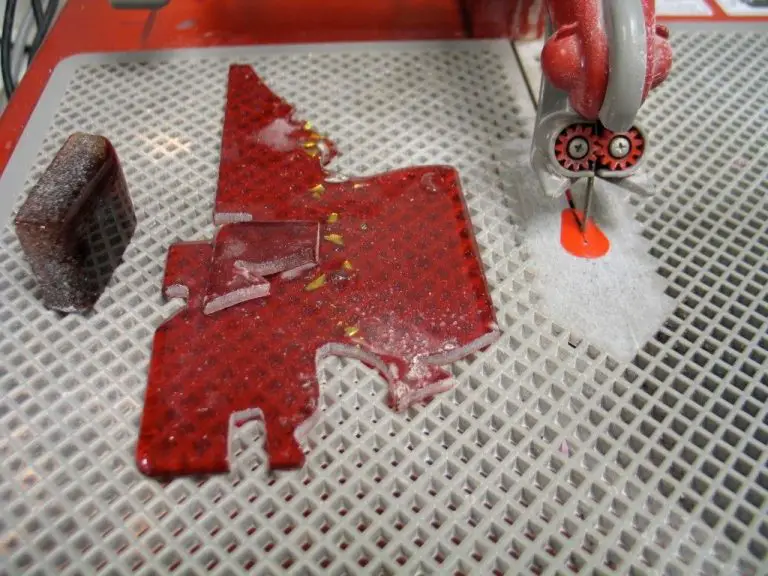What Was The Purpose To Make Large Clay Pots?
Large clay pots have been an important tool for civilizations dating back thousands of years. Often made from materials like clay or ceramic, these sizable containers served a variety of purposes throughout ancient history. Their large size and durability made them ideal for critical jobs like food and water storage, transport of goods, and cooking. Some of the main uses that made large clay pots so vital include:
– Storage – The waterproof and airtight nature of clay allowed large pots to safely store food, water, wine, oil, and other essentials. Their size enabled them to hold large quantities for households and communities.
– Transport – Large pots enabled people to move goods substantial distances by cart or ship. Their sturdy build protected contents over long trips across land or sea.
– Cooking – Pots made stewing, boiling, and baking easier. Their thick walls withstood heat from fires or ovens. The size let cooks prepare food in bulk.
Storage
Clay pots were used for storage purposes in many ancient civilizations. Their airtight nature allowed them to keep food, water, and other goods protected and preserved for long periods of time.
Large clay vessels were well-suited for storing surplus grains, olives, fruit, wine, and other foods that needed to be saved for later use. Sealing the lip of the clay pot with a lid prevented contamination from insects, rodents, or dirt. The clay also insulated the contents, keeping them cool even in hot conditions.
In addition to food, large clay pots were used to store water for drinking and cooking. Water stored in clay pots would keep cool, not absorb salts or minerals from the clay, and avoid contamination compared to storing in other vessels. The pots allowed communities to maintain reserves of clean water.
Clay pots also provided storage for non-consumable goods. Anything that needed to be kept safe from the elements or theft could be stored in these vessels, from textiles and clothing to luxury items. Their thick walls and sturdy nature protected the contents from damage as well.
The storage capabilities of large clay pots gave ancient people the means to stockpile food surpluses for future shortages or trade. Settlements could thrive with the help of these durable, reliable clay storage vessels.
Transport
Large clay pots were vital for transporting goods over land and sea in ancient times. Their durability allowed them to protect their contents on long and arduous journeys. Clay is an excellent material for transport vessels because it is sturdy, yet lightweight enough to carry when full. The ancient Egyptians and Romans, among others, loaded clay pots and amphorae onto wagons, ships, and caravans to transport everything from olive oil to wine across their empires. Sealing the vessels with wax or resin ensured the contents stayed fresh and untampered.
Clay pots enabled safe transport over any terrain. Their round shape allowed them to be rolled on land or packed tightly on ships. The hardy material was unlikely to crack or leak, even when subjected to bumpy roads or stormy seas. With capacities ranging from small jars to large storage vessels, clay pots accommodated transporting goods in bulk. Even fragile contents like olives or fish could make long voyages packed in protective clay vessels.
In many ancient cultures, clay pots were the standard for transporting goods near and far. Their versatility and durability enabled the growth of trade networks spanning continents. Without clay vessels, many goods like wine, olive oil, and spices would have been impossible to ship safely in the quantities needed. The simple clay pot was a transformative technology that fueled the ancient world’s burgeoning global economy.
Cooking
Large clay pots were ideal cooking vessels thanks to their ability to withstand fire. Their thick walls and large size allowed them to retain heat well, making them perfect for boiling, simmering, and steaming foods over a long period of time. This enabled ancient cooks to prepare stews, grains, root vegetables, and other dishes that required prolonged cooking.
These vessels could also be placed directly in fire or embers to bake breads and meats. The pots’ porous nature allowed steam to escape during baking while sealing in moisture. Breads and meats baked in clay pots came out tender on the inside with a crispy crust. Some pots featured lids to lock in more steam and moisture when baking. With their heat retention abilities and fire resistance, large ceramic pots served as versatile, reliable cooking tools for many early civilizations.
Fermentation
Large clay pots played an essential role in fermenting alcoholic beverages and preserving foods in many ancient cultures. The porosity and thickness of clay allowed air to permeate while keeping contaminants out, creating the ideal environment for controlled fermentation.
For brewing alcohol like beer and wine, clay fermentation vessels allowed the natural yeasts to convert sugars into alcohol without risk of contamination. The pots were often very large, holding hundreds of gallons, to meet the high demand for alcoholic beverages. They were sometimes coated in pitch or resin to prevent any seepage. Brewers took advantage of the clay’s natural cooling properties to maintain the optimal temperatures.
These clay pots were also invaluable for fermenting and preserving foods like olives, pickles, kimchi, and sauerkraut. The clay’s breathability prevented mold growth while the natural lactobacilli converted sugars into acids to pickle vegetables and fruits. Large fermentation jars stored huge batches, providing a vital source of nutrients when fresh produce was scarce. The clay enabled people to enjoy fermented foods and beverages all year long.
Religious Ceremonies
Large clay pots played an important role in religious ceremonies and rituals across many ancient cultures. They were commonly used to hold offerings of food, wine, oil, and other precious substances to be presented to deities and spirits.
The size and decorative nature of these large pots lent them both practical and symbolic significance. Their ample volume could hold plentiful offerings, demonstrating devotion and respect. The attractive decorations, such as painted designs and molded shapes, could represent spiritual motifs, mythemes, or elements from nature.
Some cultures believed clay vessels held magical powers. For example, certain Native American tribes in the southwest United States made special ceremonial jars called ollas. These ollas were thought to be imbued with the power to attract rain when used properly in rituals.
In many cultures, large clay vessels also played a practical role as containers to store sacred liquids used for cleansing, healing, blessings and rituals. Their sturdy nature and sealable lids kept these precious substances safe and protected.
Art
Large clay pots were decorated with intricate designs using paints, carvings, and other methods. These decorative elements served both aesthetic and ceremonial purposes.
Clay vessels used in religious rituals and funerary rites were often painted with symbolic images and patterns. The decorations were believed to imbue the pots with magical powers and protection. Geometric shapes, animals, deities, and celestial objects were common motifs.
MASTERWORK Clay pots also provided a canvas for skilled artisans to demonstrate their talents. Some ancient cultures valued ceramic artistry and developed distinctive regional styles. Master potters crafted splendid works with complex scenes depicting myths or historical events. Their creations were appreciated as objets d’art.
Decorated clay vessels displayed in temples and palaces projected the wealth and refined tastes of their owners. The patrons who commissioned such works expected the intricate, labor-intensive decorations to impress visitors. Thus, lavishly ornamented ceramic pots served ceremonial needs beyond their everyday functions.
Trade
Large clay pots were a highly traded item throughout history. Their durability made them ideal for transporting goods over long distances. Traders loaded pots onto carts, wagons, and ships to carry spices, textiles, grains, wine, olive oil, and other commodities. The exchange of these clay vessels helped spread resources, culture, and ideas between different civilizations and regions.
Archaeologists have found standardized sized pots at sites far from their production source. For example, Amphorae from Greece and Rome appeared throughout the Mediterranean and as far as China along trade routes. The uniform shapes allowed traders to efficiently stack loads. Different civilizations produced their own styles of vessels for moving goods. Finding foreign pots at a site indicates its participation in trade networks.
The clay pots themselves represented valuable goods for exchange. High quality cooking pots and decorated vessels were prized possessions and status symbols. Colorful glazes and intricate designs reflected local artistic traditions. Exchanging and collecting rare pots helped foster appreciation between cultures. Overall, the trading of utilitarian and artistic clay pots aided technological and social development across the ancient world.
Water Access
Large clay pots played an important role in accessing and transporting water in ancient times. They were essential for activities like drawing water from wells, channeling it through aqueducts, and irrigating crops.
Clay pots were commonly used as containers to collect water from wells and springs. Their porous nature helped keep the water cool in hot climates. Ropes and pulleys made it easier to lower large pots into wells and haul up water.
Aqueducts utilized large clay pipes and conduits to transport water from sources to cities and farms. These systems relied on gravity to move the water, and clay pots helped control the flow rate.
For irrigation, clay pots with small holes were buried near plants to slowly release water underground. This allowed efficient irrigation without losing water to evaporation.
Large clay vessels were also used to store water for later use. They kept it clean and helped prevent contamination. Having stockpiles of water in clay pots allowed ancient communities to survive droughts or sieges.
In summary, the durability and impermeability of clay made large pots invaluable for accessing, transporting, and storing water in the ancient world.
Conclusion
In ancient societies, large clay pots served many important purposes that supported daily life. The most common uses for these large vessels were for storage, transport, cooking, fermentation, religious ceremonies, art, trade, and accessing water.
Having containers to store surplus food and precious liquids allowed communities to stock up on provisions and build reserves for harder times. Being able to move goods safely over long distances via clay pots facilitated trade and commerce. Cooking foods in clay ovens and fermenting beverages in ceramic jars were fundamental to cuisine and culture.
Ceremonial pots were intricately decorated and used in rituals, making them meaningful across generations. Stylized urns also served as striking artworks that conveyed beliefs. In many ways, the invention of sturdy, versatile clay pots empowered ancient people to thrive and form more complex ways of living.



